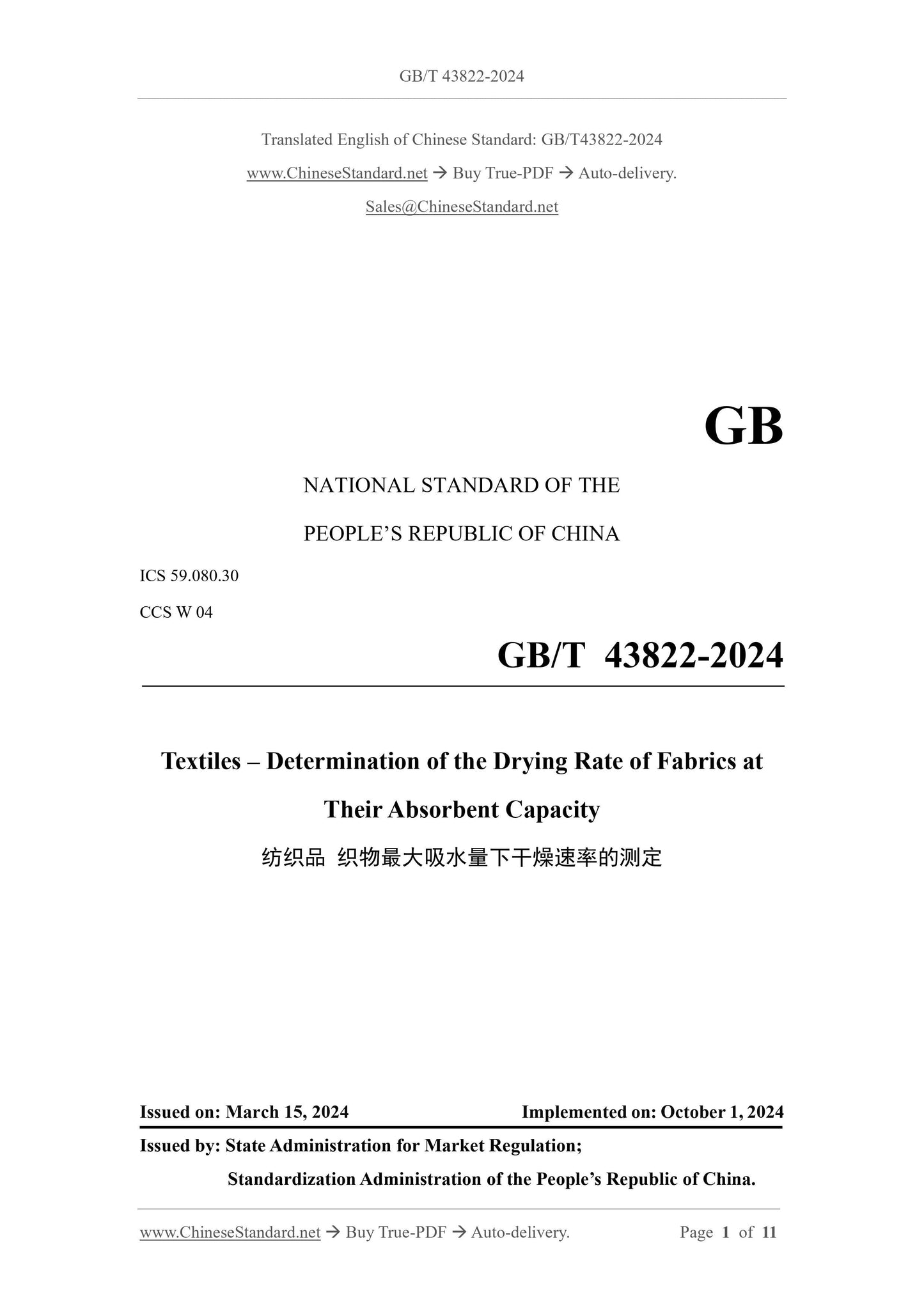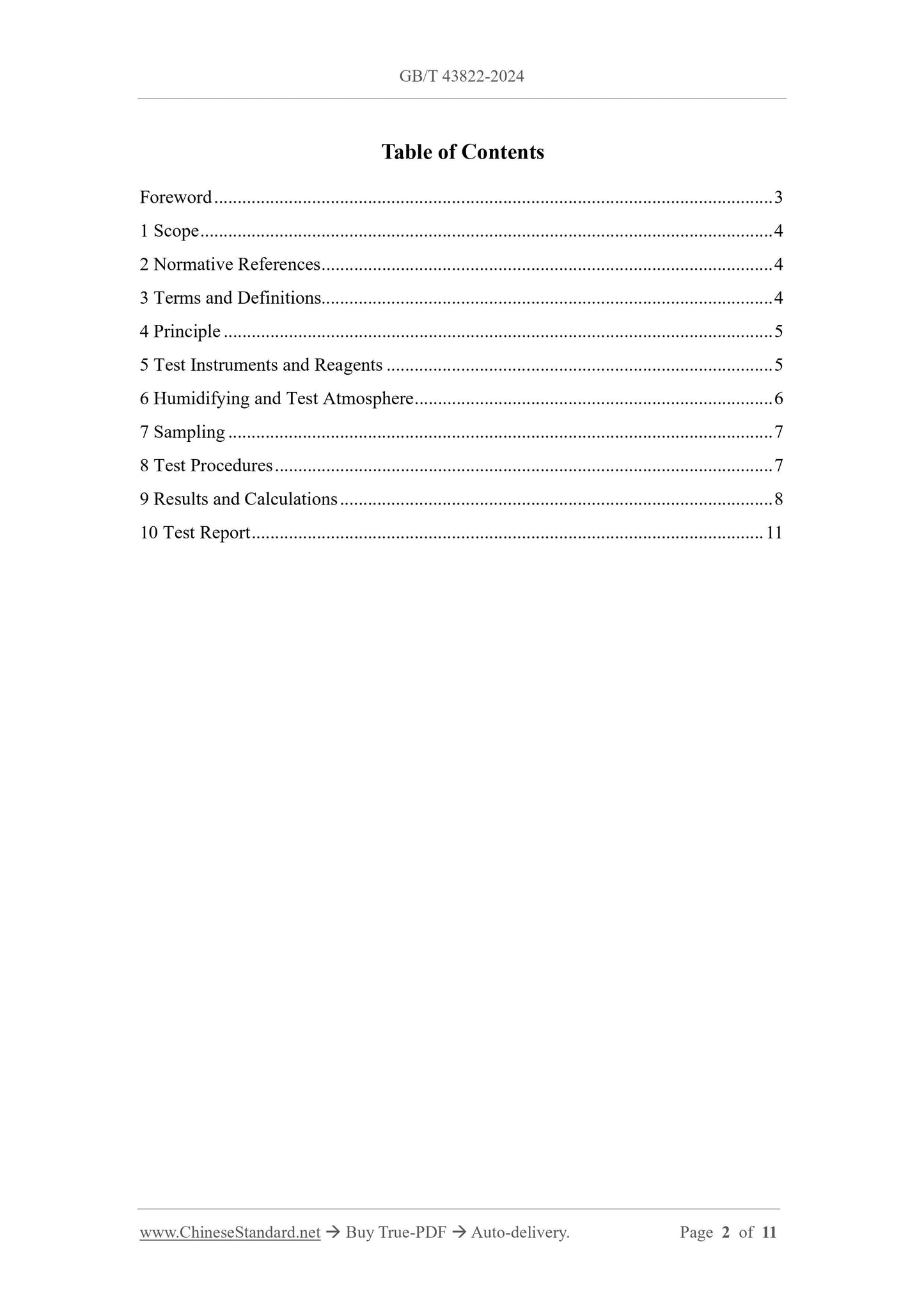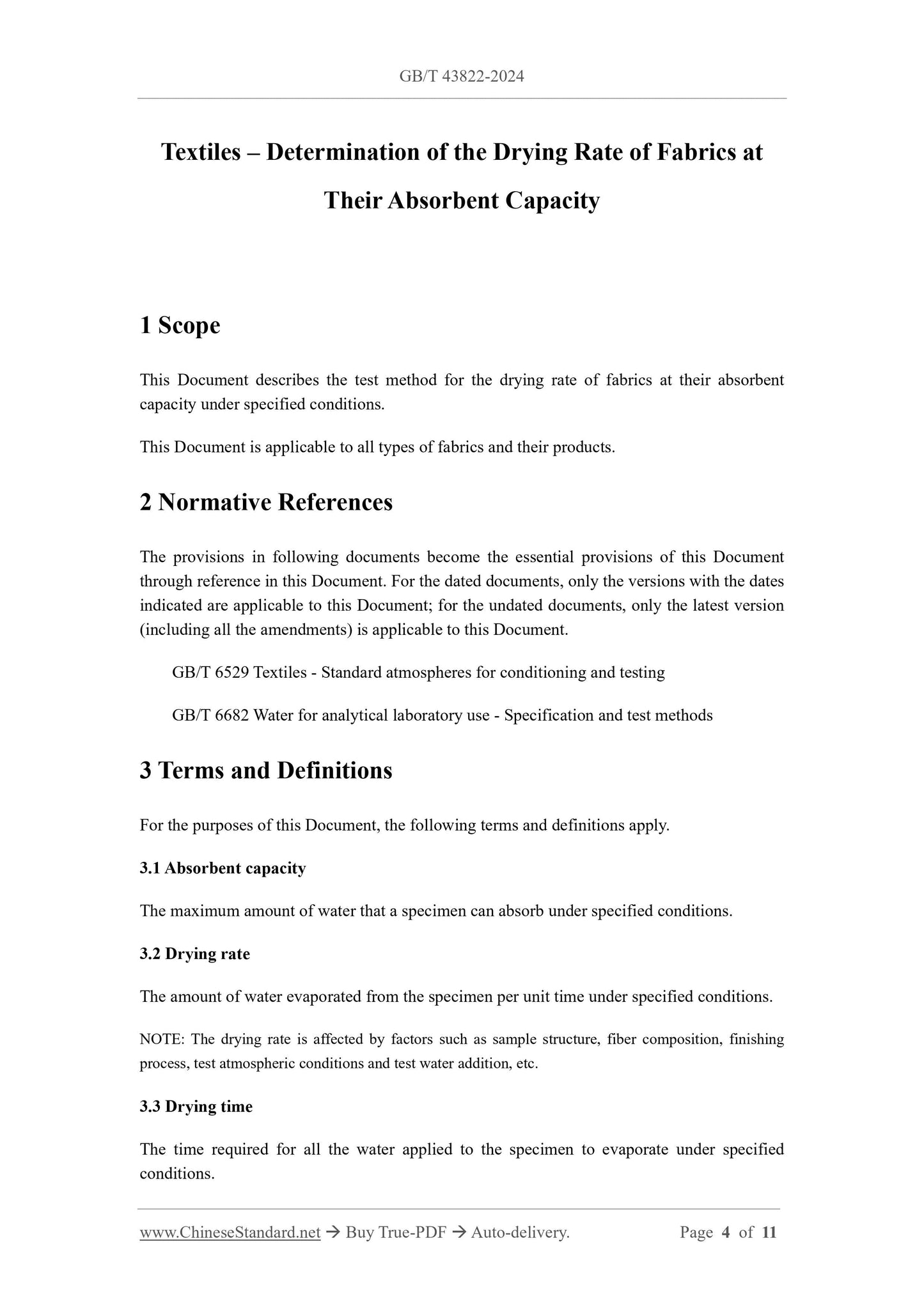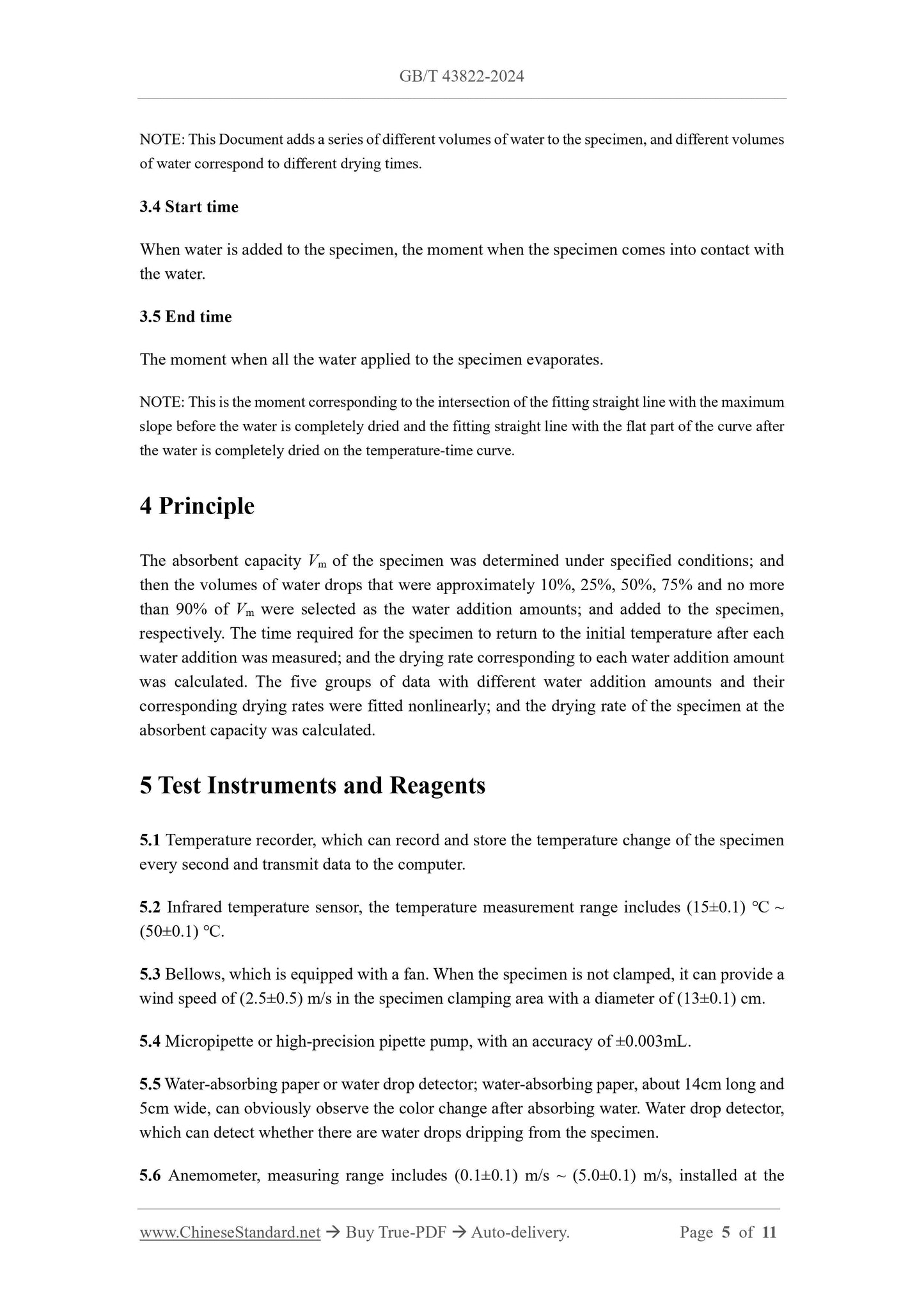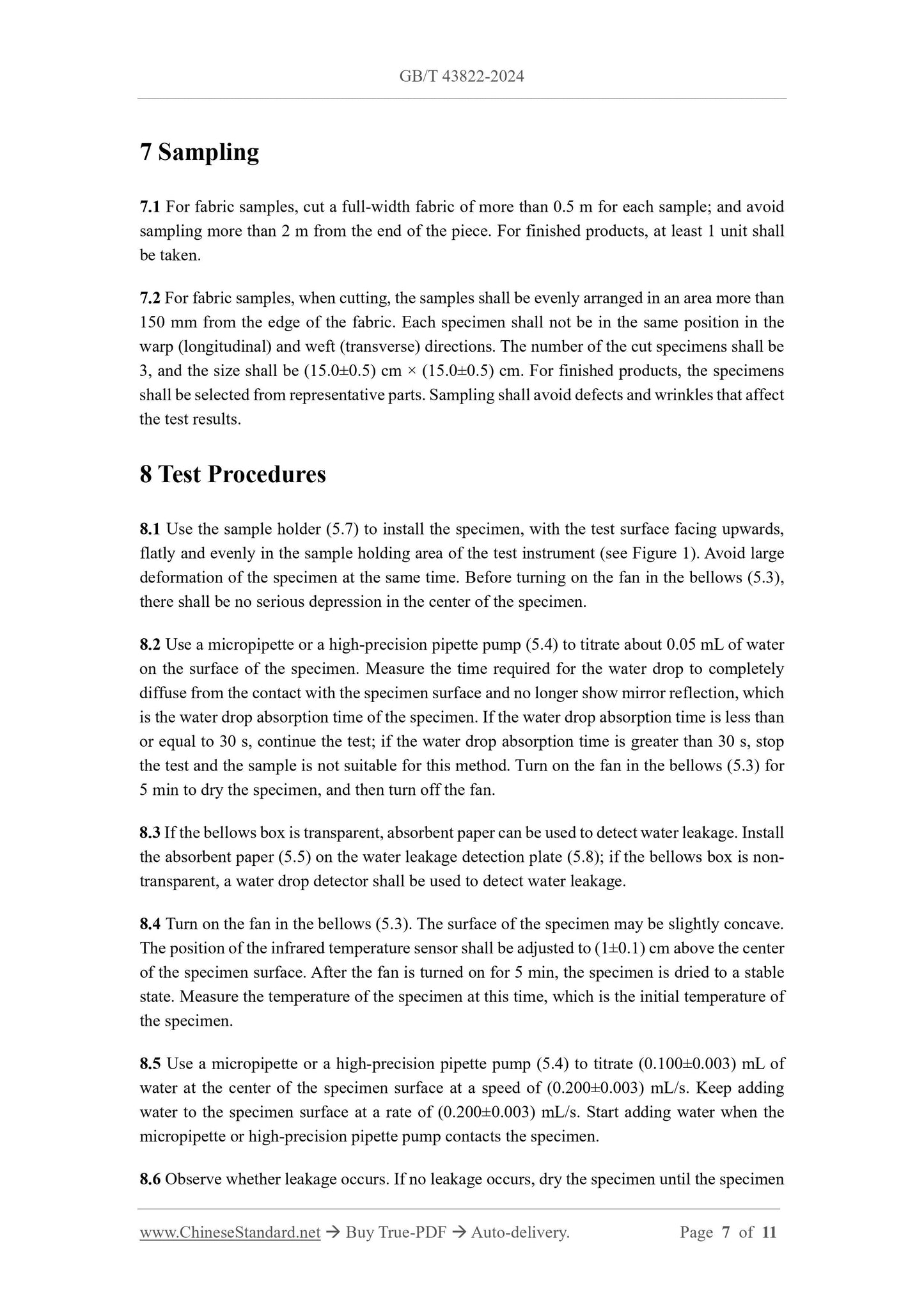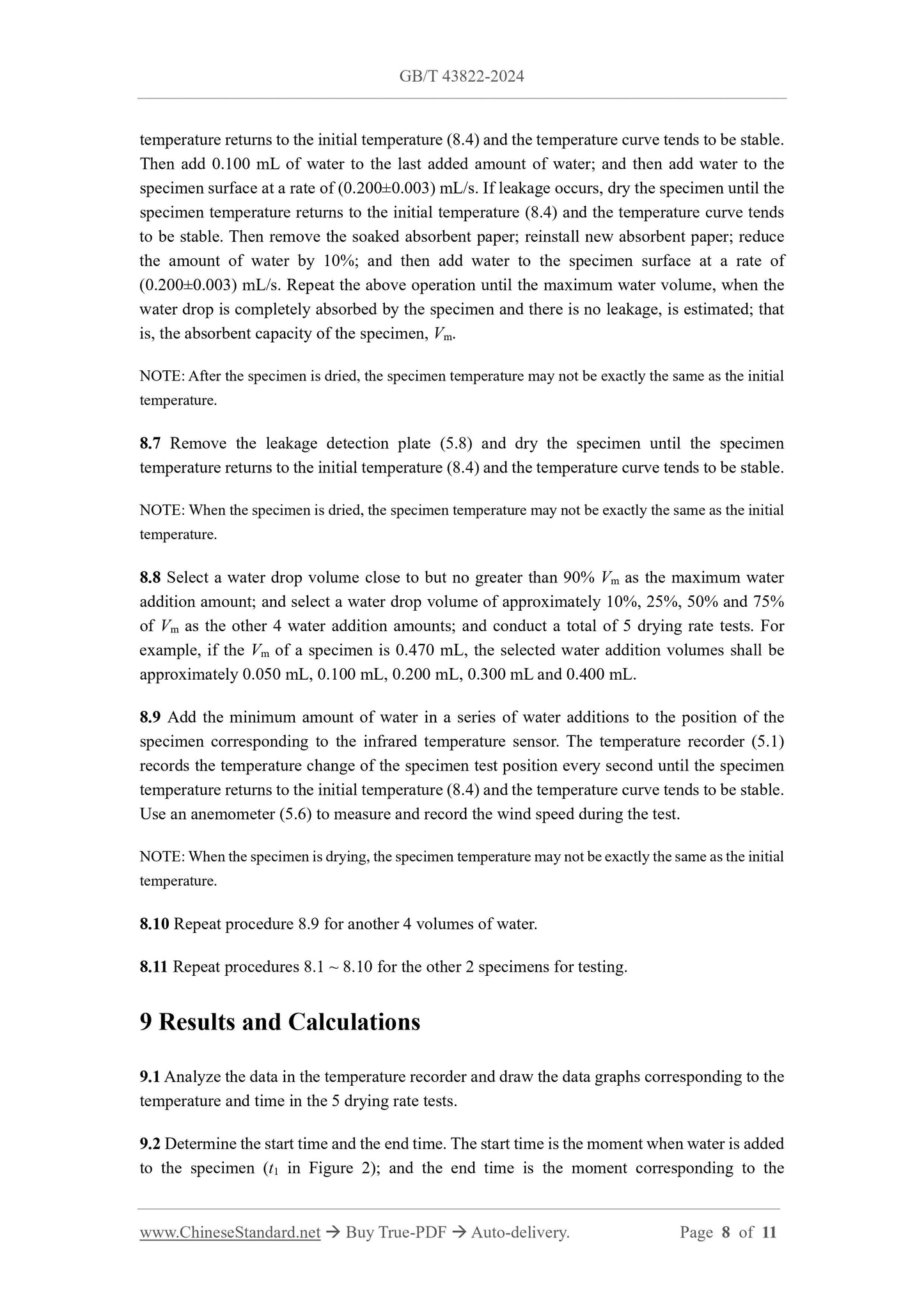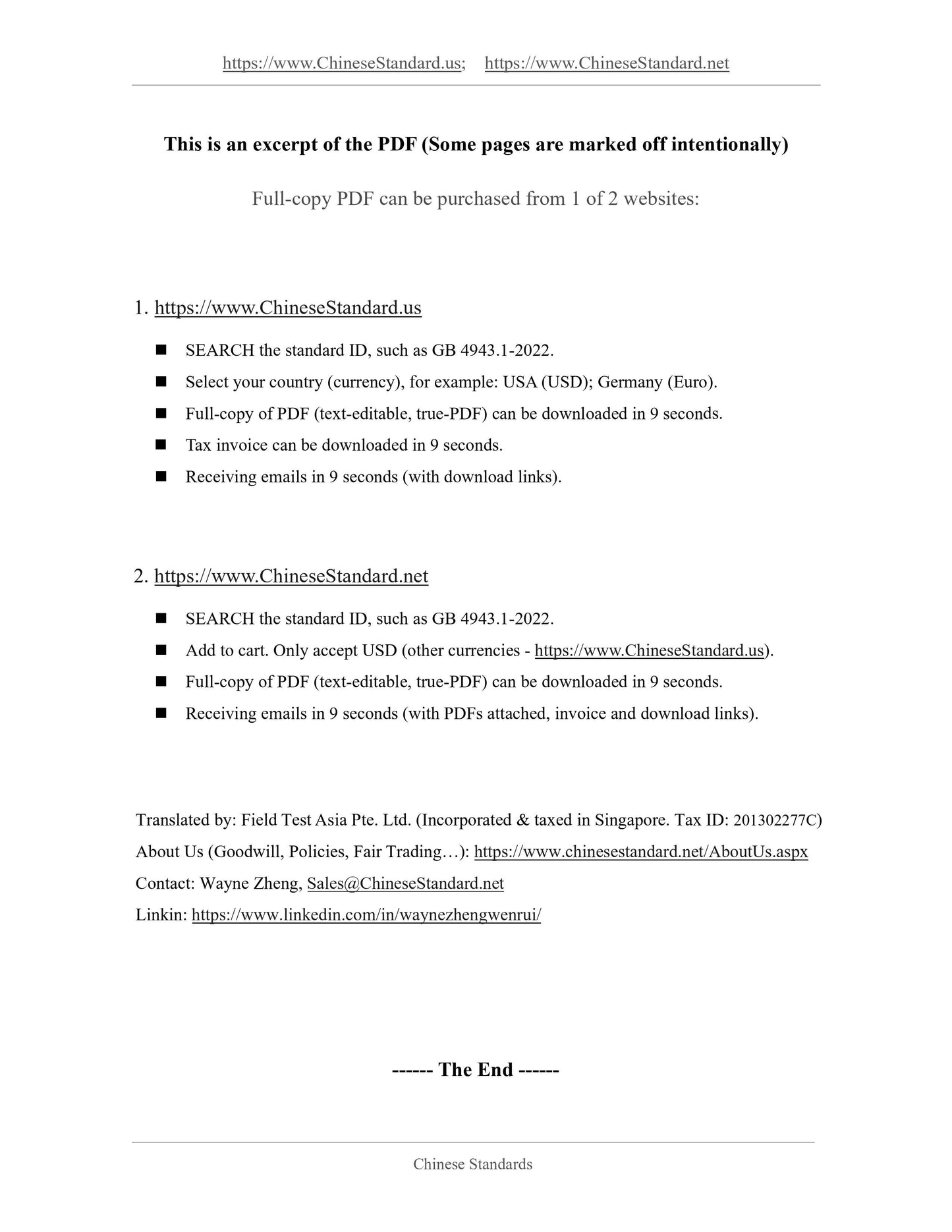1
/
of
7
www.ChineseStandard.us -- Field Test Asia Pte. Ltd.
GB/T 43822-2024 English PDF (GB/T43822-2024)
GB/T 43822-2024 English PDF (GB/T43822-2024)
Regular price
$200.00
Regular price
Sale price
$200.00
Unit price
/
per
Shipping calculated at checkout.
Couldn't load pickup availability
GB/T 43822-2024: Textiles - Determination of the drying rate of fabrics at their absorbent capacity
Delivery: 9 seconds. Download (and Email) true-PDF + Invoice.Get Quotation: Click GB/T 43822-2024 (Self-service in 1-minute)
Newer / historical versions: GB/T 43822-2024
Preview True-PDF
Scope
This Document describes the test method for the drying rate of fabrics at their absorbentcapacity under specified conditions.
This Document is applicable to all types of fabrics and their products.
Basic Data
| Standard ID | GB/T 43822-2024 (GB/T43822-2024) |
| Description (Translated English) | Textiles - Determination of the drying rate of fabrics at their absorbent capacity |
| Sector / Industry | National Standard (Recommended) |
| Classification of Chinese Standard | W04 |
| Classification of International Standard | 59.080.30 |
| Word Count Estimation | 10,125 |
| Date of Issue | 2024-03-15 |
| Date of Implementation | 2024-10-01 |
| Issuing agency(ies) | State Administration for Market Regulation, China National Standardization Administration |
Share
